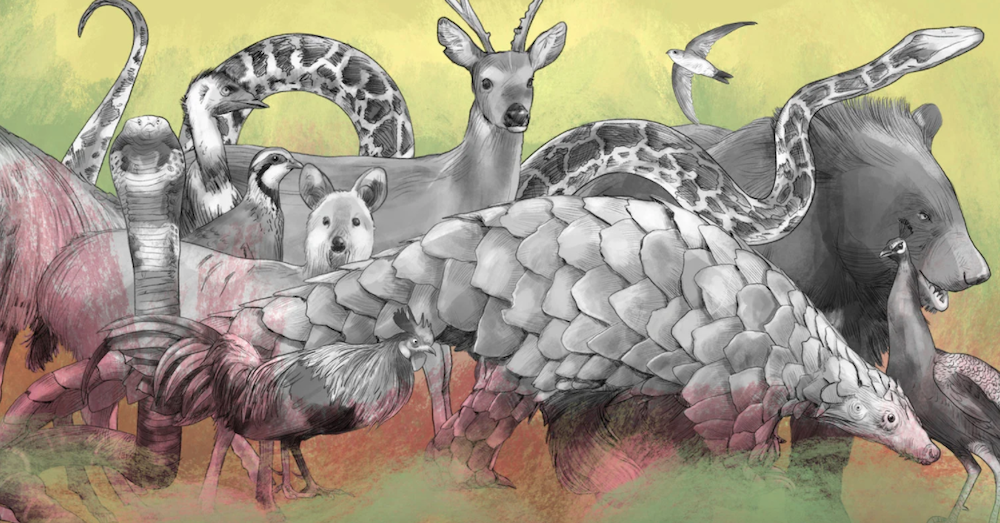Wildlife Trade and the Global Health Crisis

In order to understand how the world is thinking about protecting wildlife and curbing wildlife trade in the wake of the Covid-19 pandemic, Columbia Global Centers| Mumbai organized a webinar on June 17, 2020, featuring Claudia Dreifus, Adjunct Professor at the School of International and Public Affairs, Columbia University, Abi Tamim Vanak, Senior Fellow at ATREE, India, Wendy Hapgood, Director and Co-founder of Wild Tomorrow Fund, and Karen Qin Xue, Director of Global Coordination at the World Wild Fund in Beijing.
The webinar opened with a discussion on the prevalence of zoonotic diseases. Citing figures from the Wildlife Conservation Society, Ms. Xue noted that about 1.7 million viruses in animals and birds are yet to be discovered, out of which a high number could be zoonotic. The zoonosis risk could be multifold if stress conditions due to climate change and other factors are also added, remarked Dr. Vanak. Panelists observed that zoonotic diseases had existed in the past too due to human interaction with wild and domesticated animals, but the spread had been more contained. Ms. Xue provided sociocultural reasons in China where the traditional beliefs that animal bone powders having medicinal benefits and traditional artisan business like ivory carving were responsible for wildlife product markets. Dr. Vanak said that game hunting for meat eating or for commercial reasons was also common in traditional India. Ms. Hapgood shared that the United States of America is also the source of wildlife trade but in net terms, the country imports wildlife products amounting to almost USD 4.3 billion in legal trade in 2019.
A number of solutions and points of intervention were proposed by the panelists. The regulatory space was important, according to Dr. Vanak who spoke about the positive effect of India’s Wildlife Protection Act of 1972 on curtailing consumption and hunting, although he admitted that poaching continues to be a big challenge, especially for those species that go under the radar. Ms. Hapgood emphasized the need to amend and improve the Convention on International Trade in Endangered Species of Wild Fauna and Flora (CITES) that had been agreed between nations since 1963 but had not been effective in addressing illegal wildlife trade adequately, especially in the case of small mammals like the pangolin.
A ban on wet markets throughout the world was a solution proposed by conservationists and scientists interviewed by Professor Dreifus, she said, adding that while the long-term focus could be on identifying illegal trade routes, immediate action could focus on the current legal trade. Others like Dr. Vanak were less enthusiastic about blanket bans, keeping the dependence of communities on the produce in mind. All panelists highlighted the role of civil society and the need to raise awareness. Advocating for more media coverage, Professor Dreifus revealed that wildlife stories that were otherwise relegated to a backseat in the media are coming to the forefront as people are using their cameras and putting wildlife stories over social media. Dr. Vanak shared information about their Onehealth platform, an integrated health monitoring approach that extends to humans as well as domestic and wildlife health so that health and environment can be monitored together. Highlighting the importance of collaborating with civil society, Ms. Hapgood spoke of how her organization is helping wildlife reserves of South Africa by fundraising for conservation, and equipping and training the wildlife managers. She also acknowledged how recognition of private ownership of wildlife reserves by the South African Government has helped in creating more privately funded habitats for wildlife. Ms. Xue, shared how WWF China is involving both the corporate sector and international tourists to bring greater awareness about wildlife crime.
The webinar underscored the urgency of action on wildlife trade and protection practices and called for re-imagining our relationship with the surrounding natural world.